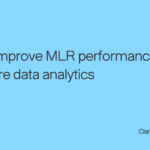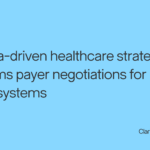Niall Brennan, Chief Analytics and Privacy Officer at Clarify, is a leading authority on price transparency. As the former Chief Data Officer at the Centers for Medicare and Medicaid (CMS), he was responsible for leading CMS’ first price transparency efforts, which are the foundation for the policies we have in place today. In this video, Niall discusses hospital and health insurance price data and how the recent price transparency regulations are changing healthcare. Video transcript: Hi, everybody. I’m Niall Brennan, Chief Analytics and Privacy Officer at Clarify Health. I want to talk to you today about the prices that are negotiated between health insurance companies and providers for the care that you receive. Both insurers and providers have been able to claim that this information is proprietary and nobody else should see it. These are secret rate negotiations. Well, all that’s about to change or has changed recently with the release of both hospital and health insurance price transparency data. I’ve been involved in championing price transparency for a very long time. Prior to coming to Clarify, I ran a nonprofit here in DC that was focused on price transparency, and I was the chief data officer at CMS for seven years. Not CMS. I led a lot of the initial price transparency efforts, whose fingerprints can be seen on these new regulations and new data releases that have been coming out recently. So have these new requirements been working? Well, on the hospital side, it’s been a little bit of a mixed bag. Initial hospital compliance with these requirements were quite low. Estimates are that as few as 14% of hospitals are fully compliant with these regulations. In addition, hospitals sometimes put the information on their websites in ways where it couldn’t be indexed or found by search engines, which is obviously problematic if you’re trying to find this information. Also, CMS has not been very active in finding hospitals who do not comply with this regulation. As of October, 2022, only two hospitals have been fined for non-compliance. On the other hand, you have health insurance companies and that requirement became effective in July of 2022 and so far it seems as if most or all insurance companies intend on complying with this rule very quickly. Again, in part this is driven by incentives. The fines for insurance companies are much higher than the fines for providers. The other big difference is the size of the files that insurance companies are releasing are just absolutely gargantuan. Most of the hospital data could be released on spreadsheets and while not terribly easy for a common person to interpret, all in all, there just wasn’t a lot of data. With payer data, they’re releasing petabytes and petabytes of data every month, hundreds and thousands of files. Our latest estimates is that when all this information is combined, that it’ll probably be well over a trillion lines of information. To put it in more context, United Healthcare, a single month of their price transparency data is larger in size than three full years of every hospital physician and drug claim in the Medicare program. So now that the data’s out there, what do we do? Well, as I’ve said, the data sets are really large and overwhelming, and they also contain some information that’s not entirely straightforward, certainly for a casual person. Many state blue plans, in addition to releasing their negotiated rates that they have with providers in their state, are also releasing negotiated plans that every other blue plan have in every other state. So you can go to a file that contains information for a health plan in Pennsylvania and find tens of thousands, in fact, hundreds of thousands of negotiated prices in Atlanta, Georgia, for example. So that’s not going to help anybody. I think a really important thing to keep in mind too here is is that the prices themselves are only part of the issue and only part of the solution. You really need to look at this information in concert with lots of other information in order to make the best decisions about how to spend your healthcare dollar. That applies equally to an employer choosing a TPA or choosing a payer to provide benefits to their employees or an employer deciding on what benefit package to have for their employees and how many hospitals or physicians to include in that benefit package. So you wouldn’t want to go to a provider just because they have the lowest price. You want to go to a provider that has the highest overall value measured in terms of both price and quality. So that’s what is going to happen over the coming months and years. There’s going to be a lot of organizations who are going to work really hard to turn these mountains and mountains of data into actionable insights and guide them to the lowest cost, highest quality providers, and as a result, make our healthcare system a better place for people to seek care in an affordable manner.
- Author Details





